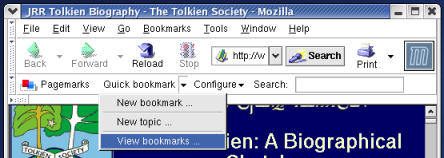
Figure 1: The Annotea shared bookmarks toolbar.
In Semantic Web world users attach information to objects with meaningful labels. Both objects and labels are identified with unambiguous Web addresses. In the real world, annotations and bookmarks are familiar, commonly used labels for also attaching information to objects. That's why they suit so well to be used as an easy metaphor for creating and presenting Semantic Web content. Different types of annotation or bookmark labels can be easily included into the metaphor.
Annotea [1, 6] has demonstrated the use of the Semantic Web based annotation labels stored to different annotation servers. Annotea shared bookmarks, based on the same technology, demonstrate the use of Semantic Web based bookmark labels. Shared bookmarks help users including schoolkids, students, grandparents, librarians and researchers to easily organize Web information by using concepts or categories that they are familiar with, while benefitting from the Semantic Web. They can also make connections to concepts used by their collaborative peer groups or to concepts in standard ontologies.
Commonly available shared bookmarks repositories can create a network effect leading to new discoveries. For instance, researchers in lifesciences area are typically not experts in computer science. Shared bookmarks can greatly enhance collaboration in this multidisciplinary area by enabling connections and easy knowledge sharing across research areas and groups [7]. Services and applications only need to provide unambiguous URIs for their concepts and elements.
As shared bookmarks are easy to create we hope to be able to see network effects also in applications using bookmark repositories, such as data mining applications, services with user profiles, search engines and applications organizing blog type information.
Currently, we have two demonstrable implementations of Annotea shared bookmarks. Amaya 8.6 has the first basic implementation concentrating on the common bookmark functionality while the ongoing Mozilla ubimarks implementation explores new user interface possibilities.
The basic operations implemented include creating collections of new bookmarks and topics, presenting them in hierarchies, copying and pasting bookmarks from one collection to another, and presenting the bookmarks on the page that they recall. Several bookmark collections can be combined, for instance a collaborative group may publish a topic hierarchy to be used by all its members while the actual bookmarks in this hierarchy reside in published or in local bookmark files.
In addition, we explain couple of simple experiments that use bookmark metadata in other applications..
The Annotea shared bookmarks toolbar in Mozilla consists of the pagemarks icon that can be clicked to see the bookmarks that recall the current page, the quick button for creating a default bookmark, a related menu, a configure menu for configuring preferences, selecting bookmark stores, and the default topics to be used with the quick bookmark. The toolbar also has a reservation for a search field planned to be used for searching bookmarks according to their topics or other information. Amaya automatically shows the bookmark hierarchy when it discovers bookmark metadata in an RDF file.

Figure 1: The Annotea shared bookmarks toolbar.
The menu related to creating the quick bookmark can open a bookmark or a topic window for a more customized creation of the the topics and the bookmarks, it can also open a window for showing the bookmarks in a topic hierarchy.
The bookmarks can be viewed in a topic hierarchy. This looks very similar to looking at the bookmarks or favorites folders. The Annotea schema supports bookmarks that belong to several topics, which is not always the case with the traditional hierarchies or even Semantic Web based shared libraries, such as DMOZ [3]. However, users find it natural. Clicking on the bookmark opens the recalled page and clicking on the property icon shows the properties of the bookmark. Clicking on the topic always shows the topic properties. Figure 2 presents a sample RDF bookmark file [10] containing a collection of bookmark and topic metadata. It there are several collections they are presented in subsequent trees.
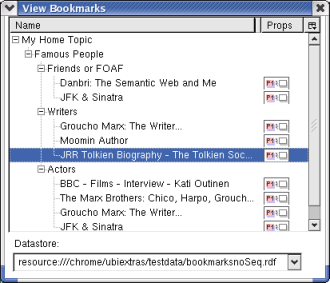
Figure 2: Presenting bookmarks in a topic hierarchy.
Pagemarks are bookmarks that recall the current page. In ubimarks demo their existence is presented with pagemark icon and text on the recalled page (see Figure 3). The icon can be selected and opened up to a pagemark window that lists the bookmarks on the page and their author. More bookmark properties can be examined by clicking the bookmark. This helps the user to find related topics or other related information that can lead to other interesting bookmarks.
 |
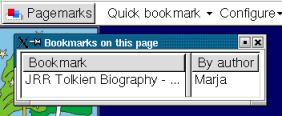 |
|
 |
||
 |
Figure 3: Pagemarks tell if the current page is recalled and can be opened to list the bookmarks on the page.
A new bookmark or a topic can be created from the toolbar menu presented in Figure 1. According to the selection a bookmark or a topic window opens showing the properties of the bookmark. The properties of an existing bookmark or a topic can be examined and modified in a similar window (see Figure 4). In that view it is also possible to follow the related links to find related topics or other interesting documents. If the user follows the links to another bookmark, topic, or a collection of topics and bookmarks, they could be presented in the bookmark or topic view or a bookmark hierarchy as well. It is also possible to present list of other properties found in the data stores even if they were not included in the bookmark definitions.
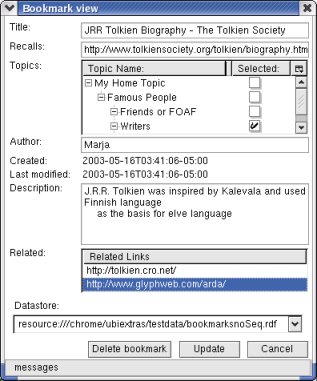
Figure 4: Properties of a bookmark presented in a Bookmark view.
Annotea shared bookmark data is suitable for many other purposes than just looking at the bookmark hierarchies. We have made some experiments with collaboratively filtering spam [8], and organizing search engine results to show the bookmarked pages first [9]. In addition, bookmark files can be used as profiles to Web services to get help get more exact information.
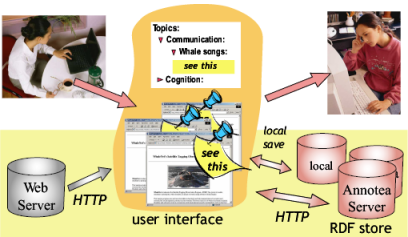
Figure 5: Annotea shared bookmarks use the basic Annotea architecture.
Annotea shared bookmarks [5] uses the basic Annotea architecture [4] that we have already demonstrated for Annotea annotations. Bookmarks and topics are RDF metadata [2] and collections of them can be stored on local files or on the Web. The Annotea server has been prepared for storing bookmark and topic collections. It will be demonstrated in the near future as the Mozilla work advances.
Annotea shared bookmarks is a way for normal users to easily create and view Semantic Web content. It is also a way to easily share information and organization of the information with others. We hope that by making shared bookmark tools available in the browsers, they help create a network effect, where everybody benefits.
Software is available as open source. Amaya 8.6 includes the first usable Annotea shared bookmarks implementation. It is freely available from http://www.w3.org/Amaya. Annotea ubimarks demo is implemented on top of Mozilla, and it can be loaded from http://www.annotea.org/mozilla/ubi.html.
Jose Kahan, Eric Prud'hommeaux and Ralph Swick have been in central role in developing Annotea. Nobuhisa Shiraishi helped to demonstrate collaborative filtering with Annotea shared bookmarks. Thanks also belong to many other people who have contributed to Annotea work.